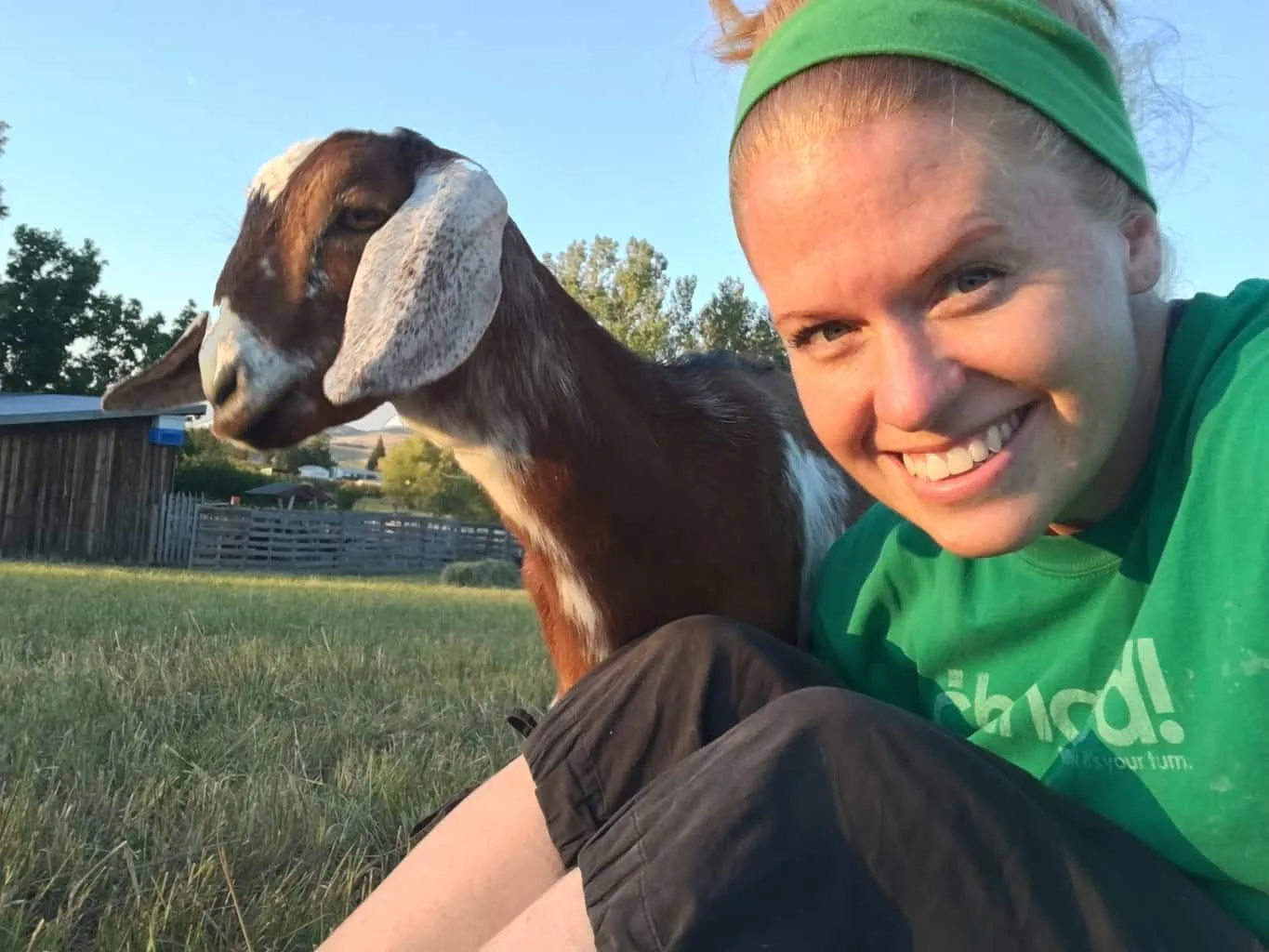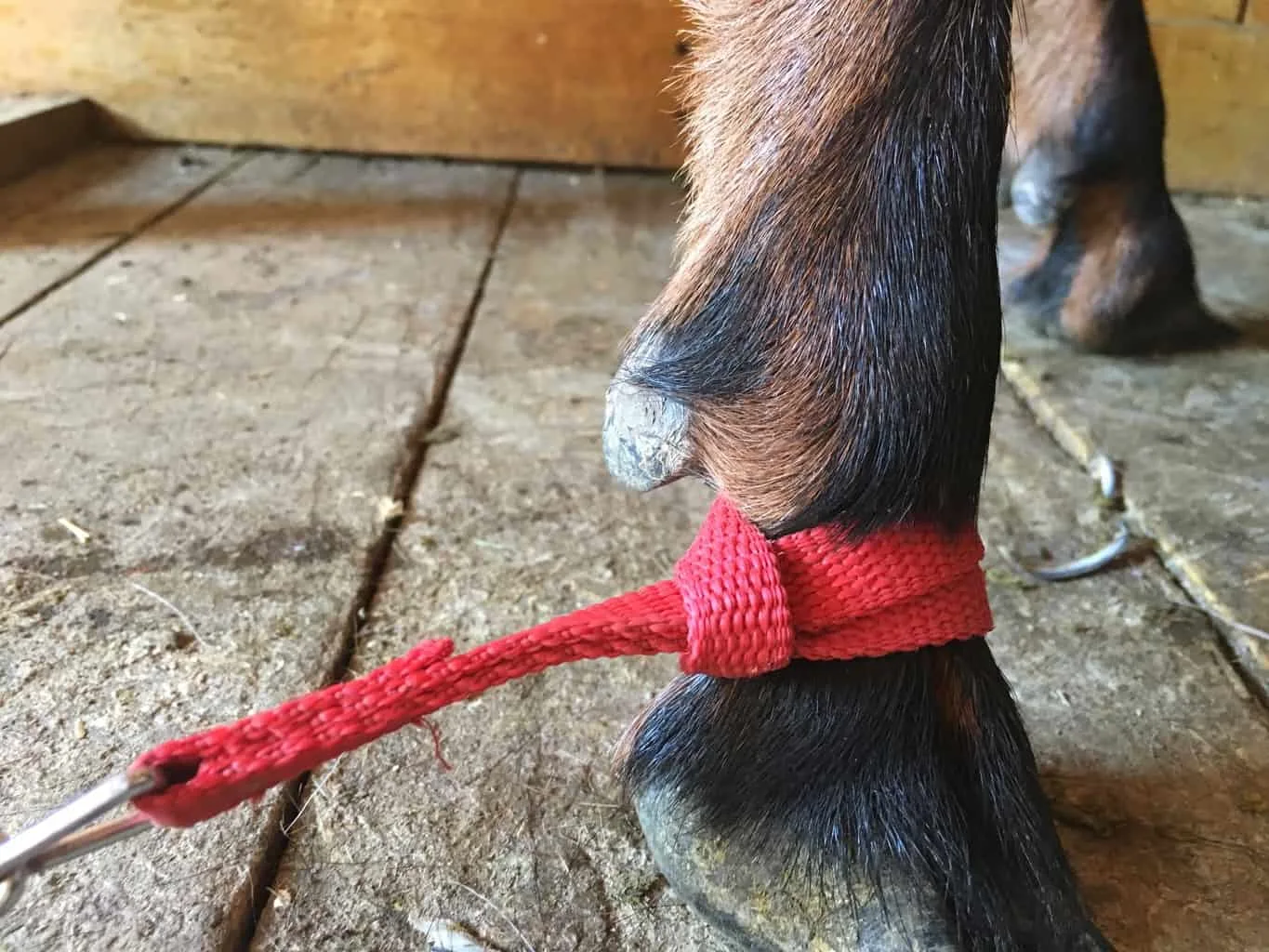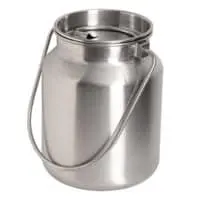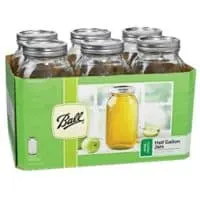The milking pail clattered noisily as it sprang from side to side several times. In the glint of the stainless steel shine of the pail, I could see two hooves flailing higher than my astonished, saucer-sized eyes. (Or were they pinched shut for protection??)
What. In.The.World. Was going on?? How could this doe be as crazy as a March hare when her full-blooded-from-the-same-litter sister took to milking like she had been doing it all her life? They had been in the exact same environment, raised the same…
And here I was…in the heat of the summer, sweating like a stuck hog, covered head to toe with milk, while a young first-freshener sat in my lap as I milked.
There had to be an easier way. How would I survive milking season if this would be the outcome every day? I would go crazy!
Well, after the first milking was under this goat’s belt and she was still kicking like a bareback horse at the NFR I knew I had to figure something out. I didn’t have enough tears to cry over all this spilled milk!
Do you have a doe that is spilling too much milk? Or maybe you have a new doe that you are wondering how it will all turn out when you start milking?
Well, the good news is…I got the milk-soaked pants so you don’t have to!
TRAINING NEW GOATS TO MILK
You can watch the video below and see the very first milkings of two of my does that were raised in the same environment and had two very, drastically different reactions. I just watched it again myself and laughed. Oh, Olivia…so dramatic!
If you like this information, my YouTube channel is full of even more goat information. Please click this link: Delci | A Life of Heritage and subscribe! You can also click this link to watch this information on YouTube: Training New Goats to Milk Video on YouTube
There are a few things you can do to make sure that your goat’s first milking will go as smoothly as possible. If you are new to milking or want a refresher on how to milk efficiently, watch and read this video and post:
When you milk, if you are wanting great records on how much each doe is producing at every milking and throughout the year, you can use the records in this Goat Health and Information Binder to keep track of that information easily. This is the binder I use for my goats!
Goat Essential ↓
Goat Management Binder
You are organized. You are knowledgeable. You are proactive. This is how. Click below to get this binder in your hands to avoid common errors that affect your goat's health. These records are your freedom and your goat's optimal health.
ITEMS YOU NEED TO MILK YOUR FIRST-FRESHENER:
- Milking stand
- Grain and grain dish
- Milking bucket
- Udder cleaning supplies
- Hobbles or leash
- Collar (& possibly leash) This collar will make catching your goat and steering your goat to the milking stand much easier.
- Strong hands. If you haven’t been milking recently it can take a lot out of your hands, wrists, and forearms. You can prepare by squeezing a ball over and over to strengthen those muscles.
- Patience with a strong dose of kindness
STEPS TO HELP A NEW MILKING GOAT:
BEFORE DOE IS IN MILK
• HANDLE, HANDLE, HANDLE. A well-handled goat will be less likely to freak out than a goat (like my Olivia) who went wild and was kicking like a bareback horse at the rodeo. Handle your goats as much as possible and get them used to being rubbed all over, down their legs, and on their udder. You will want to have a goat that will come up to you and let you love on them and who will nibble on your hair and nose. A friendly goat will be more likely to be an easier first-time milker.
• FEED GRAIN ON MILKING STAND. Believe me, if a goat doesn’t want to get onto a milking stand…it’s near impossible to get them up on one. That is back-breaking work. If you begin to feed the goat grain on the milking stand from a younger age, not only are they smaller to manhandle and get up on the stand, they pick it up quickly because there is a yummy treat involved.
• HANDLE DOES UDDER AND CLEAN AS IF YOU WERE GOING TO MILK. And when they are on the stand eating, why not take a few moments to rub them down with a rag? Spray their udder with the cleaning solution and wipe them down. This will get them used to the sensation and the whole process.
AFTER DOE IS IN MILK: FIRST MILKING
• BE PREPARED. You will want to have the milking bucket, the grain already in a dish on the milking stand, cleaning supplies close by, and the hobbles or leash ready to tie up a leg or hobble the legs if necessary. You don’t want to end up starting and have to stop to then start searching for these items while the goat gets more and more anxious and bellowing louder and louder while you look.
• TWO MILK BUCKETS. If you are milking several goats and one (or more) of them is a new milker, have one big milking pail and one small milking pail. Use the small milking pail to milk each goat into and then dump it into the big milking pail. This will eliminate two problems:
- If a new doe squats really low when milking, this smaller bucket will allow for that until she doesn’t squat as much anymore and
- If a new milker steps into the milk or knocks the bucket over, you won’t lose all the milk in one kick.
• PATIENCE. O.K. The goat is on the stand. Take a deep breath. This could go really well or it could be a circus. But no matter the outcome, it’s important to stay calm. It’s frustrating when a goat has completely lost their marbles. And when you brought this goat home for this very reason (milk!) and they are NOT cooperating, it can feel a bit defeating. This patience will help you realize that you are doing this for the long haul and most likely in a week all the major kinks will be worked out.
• BE KIND AND GENTLE. This really goes along with patience. But no matter how bad things are going, don’t pull, yank, hit, or manhandle your goat in a way that they will begin to hate this whole experience. Now, it’s important to understand that goat kids are pretty rough when they are nursing. The letdown seems like it would be intense because they nurse so quickly. And you would think that the head butting they do would put their poor momma in tears. Goats are tough but when we as humans milk them, it’s in a way that is not as natural as their kids do, and probably gives different sensations, feelings, and just makes the entire process a bit different. Keep that in mind as you begin milking your new doe. It’s a different feeling and experience. Also, consider that a doe doesn’t let her kids drink her dry. She will kick them off when she feels they are done. This will be one more piece to this puzzle that she will have to get used to. You are training her to allow you to take all of her milk and not “kick you off the tit”.
• TIE ONE BACK LEG UP OFF THE STAND or HOBBLE. As shown in the video, this was the only way that I could have gotten my goat Olivia milked. I used it for about a week and since then, she has been a great goat to milk. In fact, she is now very affectionate. But if I hadn’t tied up her leg to begin with, I think she still might be kicking the milk bucket over. This was my lifesaver. Have this on hand and ready to use for those goats who need a little bit of help to remain calm with all four feet on the ground.
These pictures show how a leash can be used to wrap around a goat’s leg to aid in milking. It takes away the goat’s power to be able to kick up into the air and knock over a milking pail.
• HOLD ONE LEG. If you don’t feel comfortable with a hobble of some sort, or the doe isn’t too bad but still is stomping or stepping forward, you can hold one back leg while you milk with one hand. It will be a slower milking, but it may be just what is needed to get it done well.
• KEEP GOING. Remember this is all for the long haul! Don’t give up no matter how hard your goat is making it. Your goat will get it. And you will be drinking fresh goat milk before you know it!
You may feel inadequate at the moment to train a new goat to milk but really it’s not that hard. It just takes some time, patience, and practice for both of you! And with these tips, you should have no problems at all!
And then remember to write all of this information about your goat’s first milking and how much she produces from here on out in your goat management binder.
This article helps complete my raising goats resource page. You can learn more about goats there!
As an Amazon Associate and member of other affiliate programs, I earn from qualifying purchases.
MILKING SUPPLIES NEEDED FOR GOATS
Notes
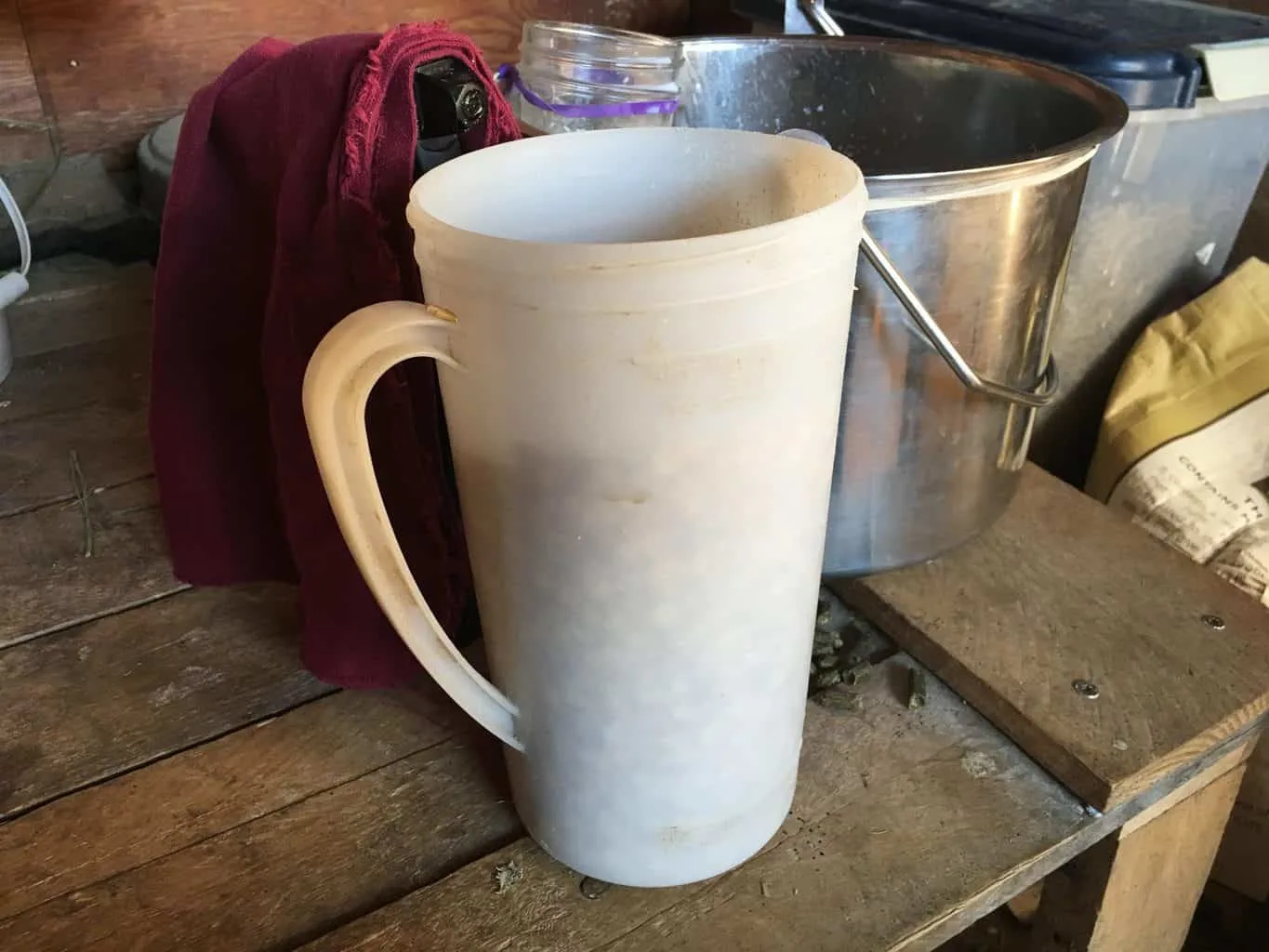
MILKING SUPPLIES
FURTHER READING
HELPFUL TOOLS
Recommended Products


